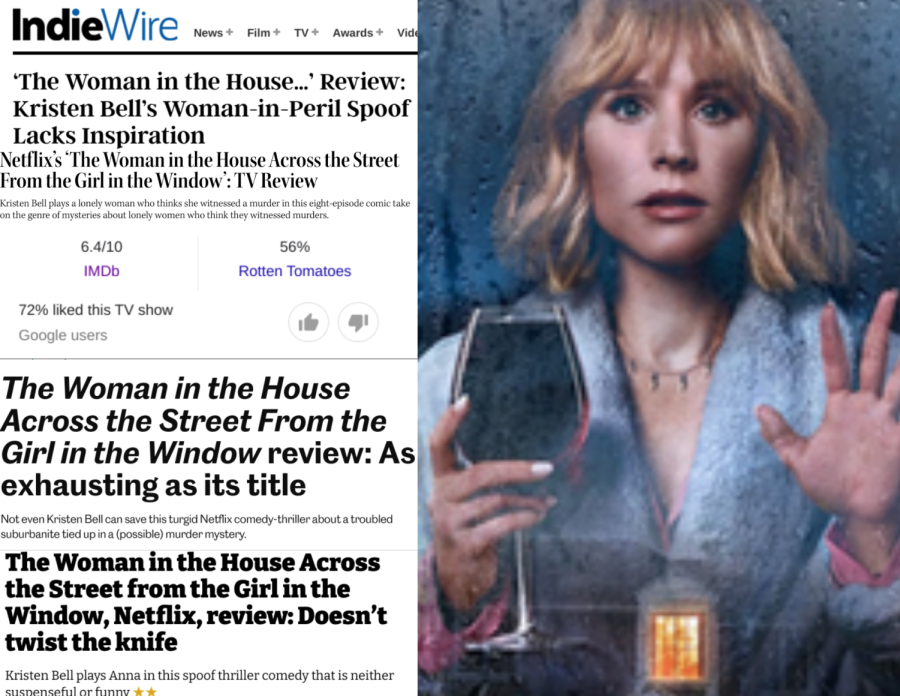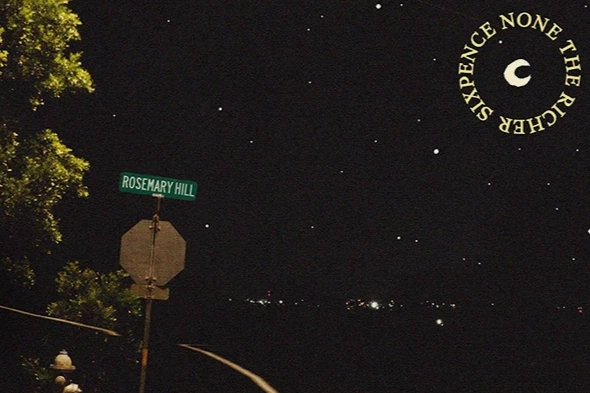“The Woman In the House Across the Street From The Girl In The Window”: 8.5/10 Stars
To understand ‚ÄúThe Woman in the House Across The Street From The Girl In the Window,‚Äù one needs to consume a copious amount of messy, mediocrely-acted Lifetime movies in which every single person is a suspect. Then, they need to watch even more‚Äîno less than 10‚ÄîHallmark Mystery specials featuring nosy protagonists who somehow always do the police‚Äôs jobs better than the professionals themselves. Only then will they be able to understand the undervalued gem that is ‚ÄúThe Woman In the House.‚Äù¬Ý
I don‚Äôt do my hair, so my mom twists and braids up my hair for me. While my hair is being detangled and combed through, Hallmark Mystery Channel is playing on the TV; ‚ÄúAurora Teagarden‚Äù and ‚ÄúMurder, She Baked‚Äù are some of the channel‚Äôs favorites. Similarly, my grandmother liked to watch Lifetime movies, so when I first sat down to watch ‚ÄúThe Woman In the House Across The Street From The Girl In The Window,‚Äù I wasn‚Äôt surprised to see exaggerated melodrama in the first couple of episodes. Combined with the theatricality of the show and an average running time of 26 minutes per episode‚Äîeight episodes in total‚ÄîI wasn‚Äôt expecting much. Luckily for me, this was the perfect show to watch.¬Ý
Like many people, I was surprised that Kristen Bell was starring in “The Woman In the House Across the Street From The Girl In The Window.” Lately, she’s been cast in more comedic roles, but it was a pleasant surprise to see her starring in the show and her performance delivered. The main character, Anna, is addicted to alcohol and is shown to drink at least two full glasses of wine in one sitting. In addition, she suffers from “ombrophobia”—a not-so-subtle poke at the movie the parody is based upon, “The Woman In the Window,” starring Amy Adams, which widely received negative reviews from critics—as well as severe depression from the gruesome death of her daughter—which, while isn’t played for laughs, is ludicrously comical nonetheless. Anna believes that she witnesses a murder of a woman, but she cannot be sure since she’s been mixing alcohol and prescribed narcotics, making her mind and memories very unreliable. From then on, the series explores the fine line between reality and fiction, what is true and what is not, with many different twists and turns that have you gripping onto the edge of your seat.
However, despite the seemingly gritty and dark premise, “The Woman In the House” frequently relies on absurdist humor throughout the series, like in the bizarre fact that Anna’s handyman is still fixing the mailbox after three years or the fact that Elizabeth, Anna’s deceased daughter, is killed in a horrifying, yet absurd way. It seems out-of-place in several different spots until you finally have the realization that all of the series is making a big show out of it. I like absurdist humor, so once I figured out that the series is a satire, it got better. The plot is absurd in the first place, but once I realized why she made so many casseroles, how Anna wasn’t dead from liver poisoning despite drinking, like, ten glasses of wine a day and the offbeat dialogue. Unlike many other satire series, such as “The Office” or “It’s Always Sunny in Philadelphia,” the humor isn’t always easy to see. The trailer doesn’t help—even I thought that Bell was returning to her “Veronica Mars” days—but I ended up liking how they dropped little clues throughout the series that the show wasn’t supposed to be taken so seriously.
The series does an excellent job of balancing the psychological thriller with humor, which genuinely is difficult and why the series threw off so many people. The series, despite being a black comedy in hindsight, maintains its serious tone throughout, which confused a lot of people who were expecting something more than the series was trying to be—a spoof of the genre. The point is that there is no point, just like the hundreds of Lifetime movies that replicate the same plot and story over and over again.
That’s not to say that it can’t be criticized: I do agree that the series tends to drag on a bit in some parts of some episodes. It can be a little slow and it was full of skippable moments. I also agree with critics that say that the series could be doing something new with the tropes it reuses instead of just re-using them, but I didn’t mind seeing all of the tropes that I did.
Along with my history of watching countless Hallmark and Lifetime series and movies, being an avid TVTropes lurker, I was already familiar with many of the tropes that “The Woman In the House” used, including “Absurd Phobia,” “Death of A Child” and the series is, of course, chock full of “Red Herrings.” Still, I honestly could not figure out who the killer was through Anna’s unreliable accounts and the constantly shifting perspectives presented to the audience.
The person who ended up being the killer was someone I had thrown out as a joke three episodes before and, I kid you not, I screamed terrifyingly loud when the murderer was revealed. The ensuing fight scene is so funny because it showcases all of the tropes of unrealistic Hallmark Mystery series and melodramatic Lifetime movies when the protagonist finally catches up with the antagonist.
I enjoyed ‚ÄúThe Woman In The House,‚Äù and I‚Äôd rate it an 8.5/10 for its dark comedy and its psychological thriller qualities, so if you‚Äôre looking for a short, suspenseful spoof and don‚Äôt mind absurdist comedy, I‚Äôd definitely recommend checking it out!¬Ý
You can stream “The Woman In The House Across The Street From The Girl In The Window” on Netflix.





![There are more than 20 open cardio machines at Crunch Fitness. I enjoyed the spacious environment at Crunch, a sentiment that was shared by sophomore Sanjana Daggubati. “[Going to] Crunch Fitness was the right decision because [it] feels more professional. Crunch’s workers are laid back, but not to the point where they don't care,” Daggubati said.](https://pwestpathfinder.com/wp-content/uploads/2025/09/IMG_5242-1-1200x900.jpg)

![Various empty Kit Kat wrappers crowd the desk, surrounded by scoring sheets. While production of Kit Kat flavors in the U.S. is limited, Nestlé, the owner of Kit Kat, manufactures hundreds of unique flavors in Japan, including the flavors ocean salt and passion fruit. “I thought there [were] some interesting flavors, and a lot of them were really unexpected,” senior Elle Levesque said.](https://pwestpathfinder.com/wp-content/uploads/2025/09/image-2.png)


![Pantone’s selection of the 2025 Color of the Year is revealed: Mocha Mousse. Ceramics teacher Ashley Drissell enjoys this year’s selection. “Maybe it’s the name but [Mocha Mousse] reminds me of chocolate and coffee. It makes me hungry. It’s very rich and decadent,” Drissell said.](https://pwestpathfinder.com/wp-content/uploads/2025/02/DSC_0015-1200x800.jpg)



Elle Rotter • Oct 11, 2022 at 3:49 pm
Elizabeth!! I have finally got around to watch this show and I never would have started without reading this review. And YES! You are so accurate in your review!!!!
Serena • Feb 17, 2022 at 11:32 am
YES ELIZABETH